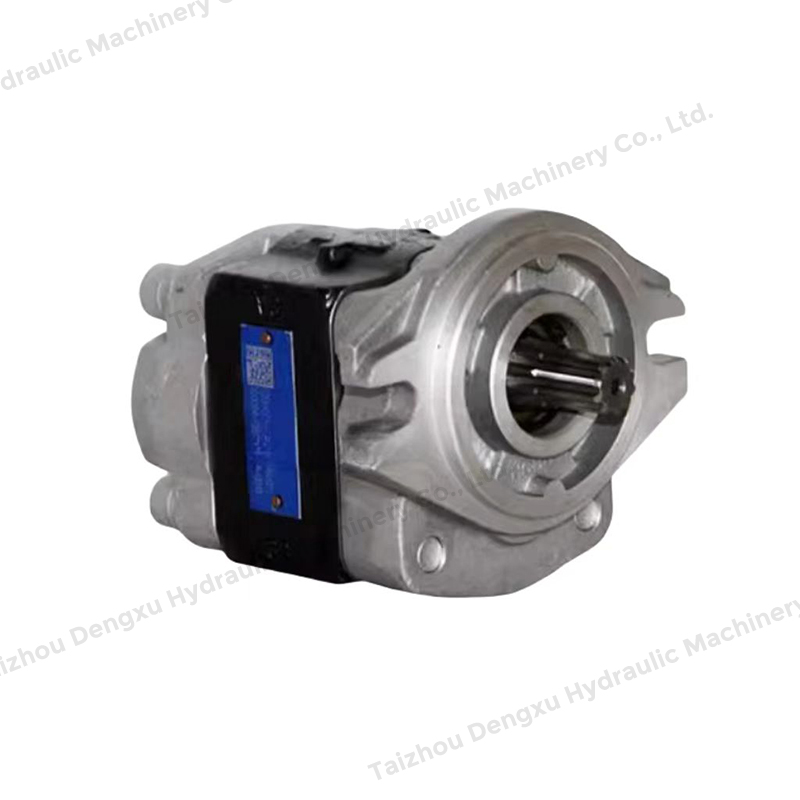1. Pump Housing (Casing)
The housing, or casing, is the external shell that encloses all internal components of the pump. It serves as the structural foundation of the vane pump and provides the interface for mounting the pump to other hydraulic system elements. The housing is typically made of cast iron, aluminum, or other high-strength metals to ensure durability under pressure and temperature variations.

In addition to structural support, the housing contains internal chambers for inlet and outlet flow and incorporates sealing surfaces to minimize fluid leakage.
2. Rotor
The rotor is a central rotating component of the vane pump, usually mounted on the drive shaft. It is cylindrical in shape and features multiple radial slots around its circumference. These slots accommodate the vanes and allow them to slide in and out as the rotor spins.
The rotor's motion is responsible for creating the expanding and contracting chambers necessary for drawing in and displacing hydraulic fluid. The rotor is typically manufactured with high-precision tolerances and made from wear-resistant materials to handle continuous operation under load.
3. Vaned Elements (Vaness)
Vaned elements, or vanes, are thin, flat components inserted into the rotor slots. As the rotor turns, centrifugal force and sometimes spring pressure push the vanes outward, keeping them in contact with the inner surface of the cam ring (stator). This movement forms sealed chambers between the vanes, the rotor, and the cam ring.
The vanes are critical for the pumping action. As they rotate through the eccentric chamber, the volume between them increases on the suction side (drawing in fluid) and decreases on the discharge side (forcing fluid out). Vane materials are typically chosen for durability and low friction, often made from carbon graphite or composite alloys.
4. Cam Ring (Stator Ring)
The cam ring is a stationary, ring-shaped component positioned concentrically around the rotor but with an intentional eccentricity. This eccentricity is fundamental to the pumping action. As the rotor turns inside the cam ring, the varying distance between the rotor and the cam ring causes the chambers between the vanes to alternately expand and contract.
The cam ring defines the pump's displacement by determining the size of the eccentric chamber. It must maintain close contact with the vane tips throughout the operation and is precision-machined to reduce leakage and friction losses.
5. Side Plates (Pressure Plates or End Covers)
Located on both sides of the rotor and vane assembly, side plates serve to enclose the internal pumping mechanism and provide axial support. They contain ports for fluid intake and discharge and sometimes include grooves or slots for directing flow and reducing leakage.
In high-performance designs, side plates may be designed with wear-resistant coatings or self-lubricating materials to extend pump life. They also play a role in sealing, ensuring that fluid moves efficiently from inlet to outlet without significant internal leakage.
6. Drive Shaft
The drive shaft transmits mechanical input from an external power source, such as an electric motor or internal combustion engine, to the rotor. It is typically a splined or keyed shaft that ensures secure connection and torque transmission.
The shaft must be well-aligned and properly supported to prevent vibration, wear, and mechanical failure. Bearings are often included in the housing to reduce friction and support the shaft during rotation.
7. Inlet and Outlet Ports
These are openings in the pump housing through which hydraulic fluid enters and exits the pump. The design and orientation of these ports influence the flow pattern and efficiency of the hydraulic system. Proper sealing and connection with the hydraulic lines are essential to prevent leaks and maintain system pressure.
In many vane pump designs, the inlet is located on the side of the pump where the chambers are expanding, while the outlet is positioned on the side where the chambers are contracting.

 Search
Search
